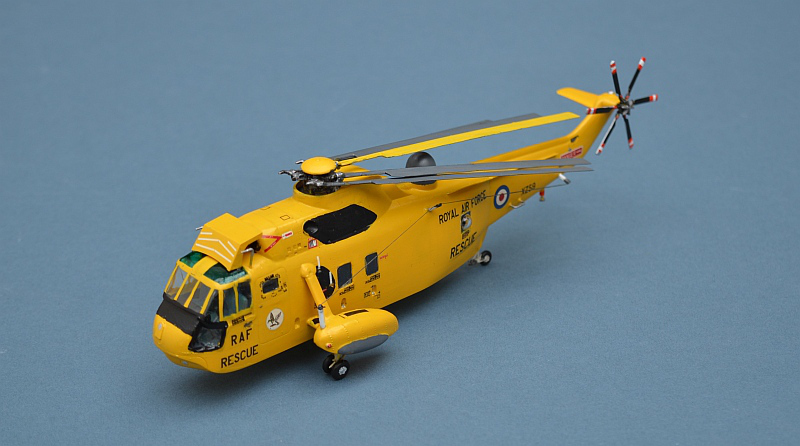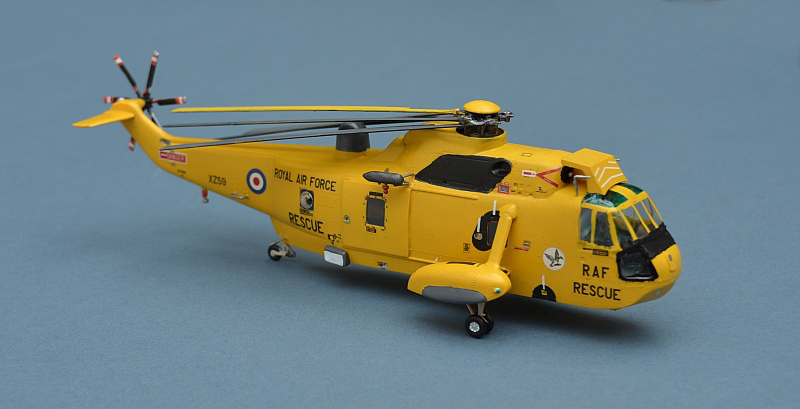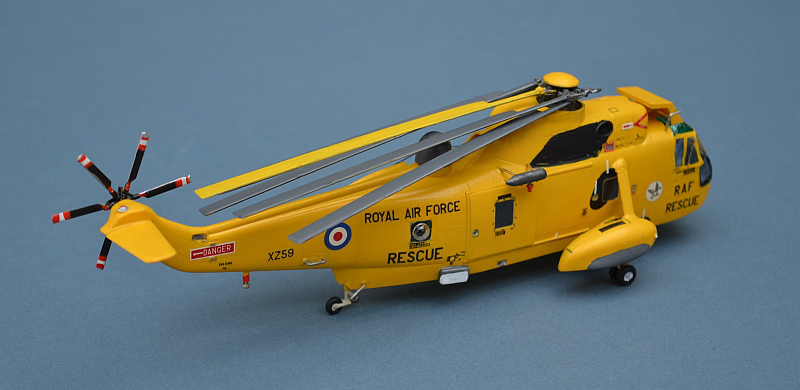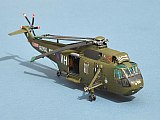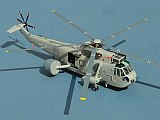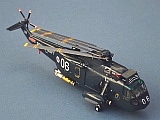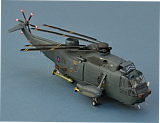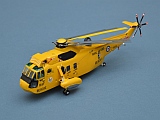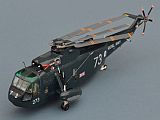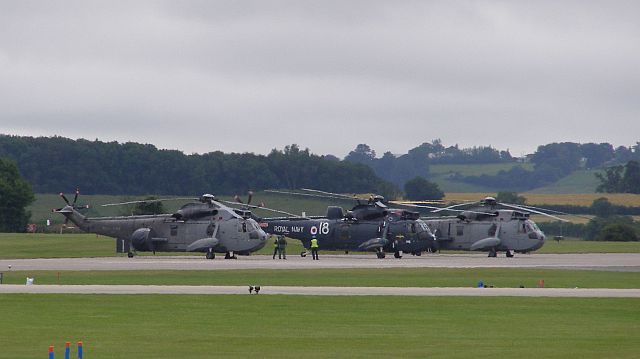The Westland Sea King……….
Westland Sea King HAS Mk.1 819 Sqn Fleet Air Arm,
Fujimi's 1/72 Sea King can be difficult to obtain, but as a kit it is roughly on
a par with the more recent Revell product. Like most 1/72 Sea King kits, it doesn't
get the canopy and nose quite right -
RN Sea Kings undertook a very different role from those of the US Navy, operating as independent ASW screening units at some distance ahead of their Task Group. often in pairs with one using its dipping sonar and the other attacking contacts. In this role, a hunting pair of Sea Kings was effectively a fast moving and agile equivalent of a Frigate, able to operate at some distance ahead of a Task Group.
Although quickly superseded at sea (on Aircraft carriers and the Tiger class ASW
cruisers) by the HAS.2, the original HAS.1s remained in active service with shore
based units until the late 1970s. 819 Squadron at RNAS Prestwick (HMS GANNET) in
Scotland was one of the premier RN front-
With regular incursions by Soviet submarines into the Clyde approaches as they sought
to detect and follow the RN SSBNs out on patrol, the Prestwick-
Prestwick’s aircraft also fulfilled a Search and Rescue and more general patrol/constabulary role across the West of Scotland (including the Highlands & Islands areas) and north Irish Sea. With a massive geographical area to cover, they quickly became the UK’s most busy SAR unit, a role that continued (in latter years, as a detached flight of 771 Sqn) until the RN disbanded its SAR force in 2015.
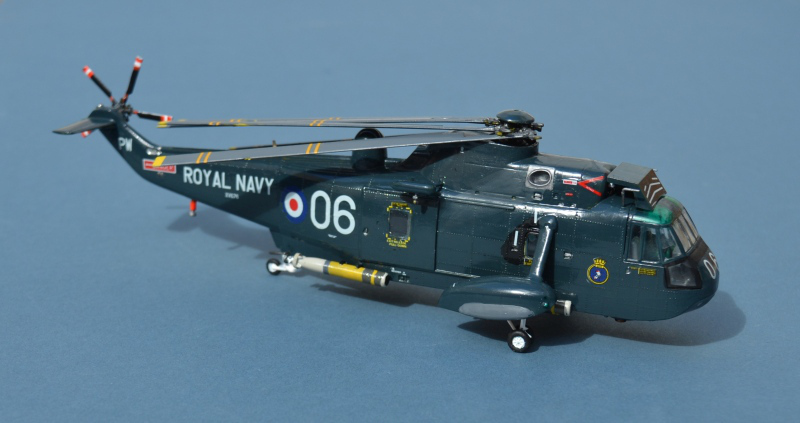
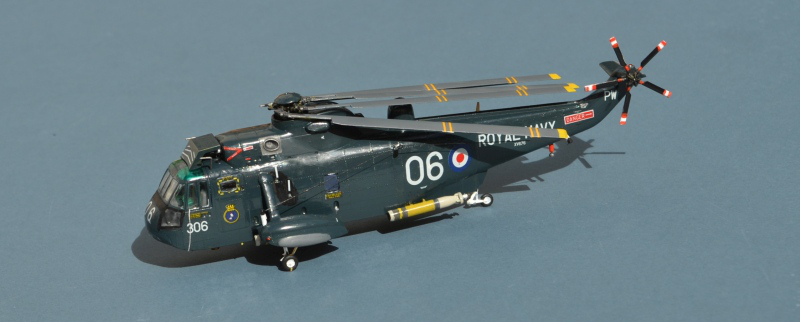
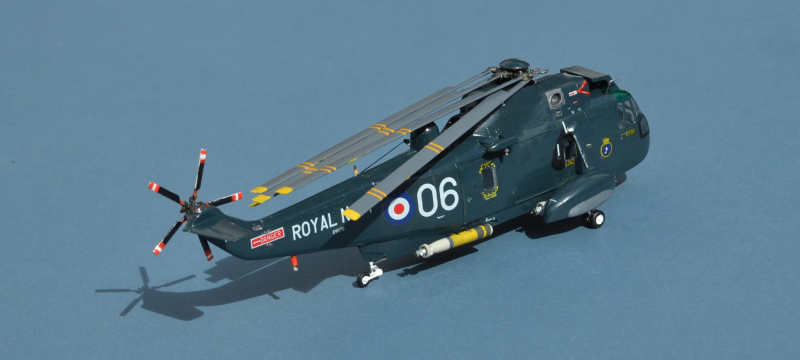
Westland Sea King HAS Mk.1 814 Sqn Fleet Air Arm,
Another Fujimi's Sea King. This was in fact a USN Sikorsky SH-
RN Sea Kings, along with Wessex Vs and a Wessex 3 were deployed onboard HMS HERMES to Cyprus in 1974 in response to the Turkish invasion of northern Cyprus, itself in response to a coup d’etat by right wing Greek Cypriots.
This was a major Cold War flash point, with 2 NATO nations on the brink of war, semi official US indifference and a real risk of Russian involvement. Britain, as the 3rd legal guarantor of Cypriot independence (alongside Greece and Turkey) and with many British Passport holders either in the Sovereign Base Areas or on holiday, was intimately involved from the start, although a full military intervention was stopped due to US pressure and a lack of clear military objectives with any chance of success. After first transporting 41 Commando Royal Marines from Malta and landing them at Akrotiri to protect the British Sovereign Base Areas, HERMES then used her helicopters to evacuate UK and other civilians caught under fire in the Turkish landing areas on the holiday beaches of Kyrenia. Aircraft were marked with large Union Flags to try to prevent either side from shooting at them.
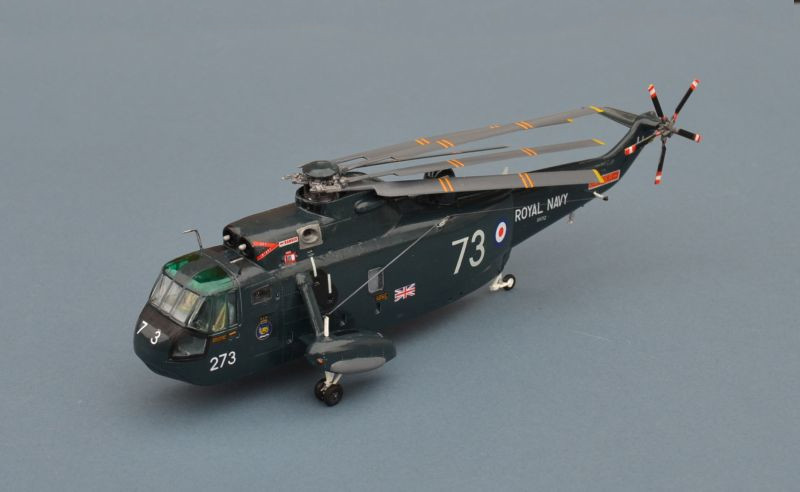
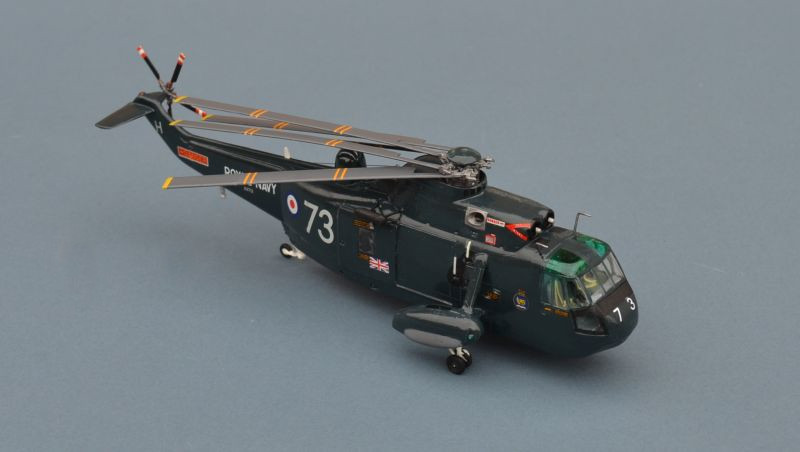
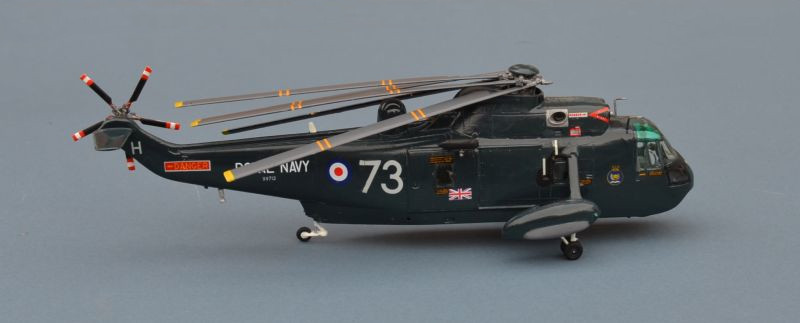
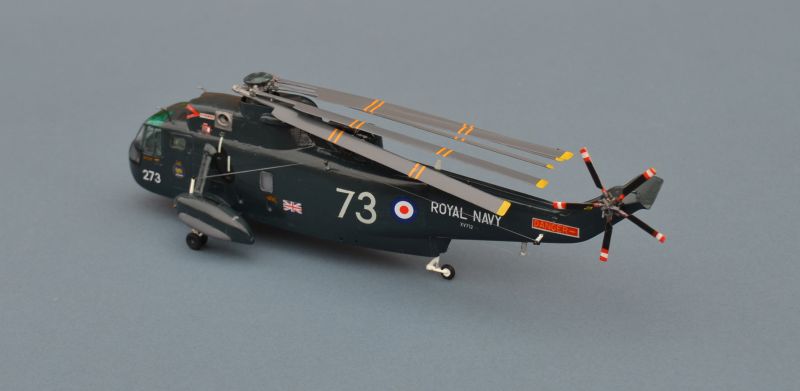
Westland Sea King HAS Mk5, 814 Sqn Fleet Air Arm,
This is also the Fujimi 1/72 HAR.3 boxing issued in the mid 1980s (which is when
I built this one), with the superb C-
The Westland WS-
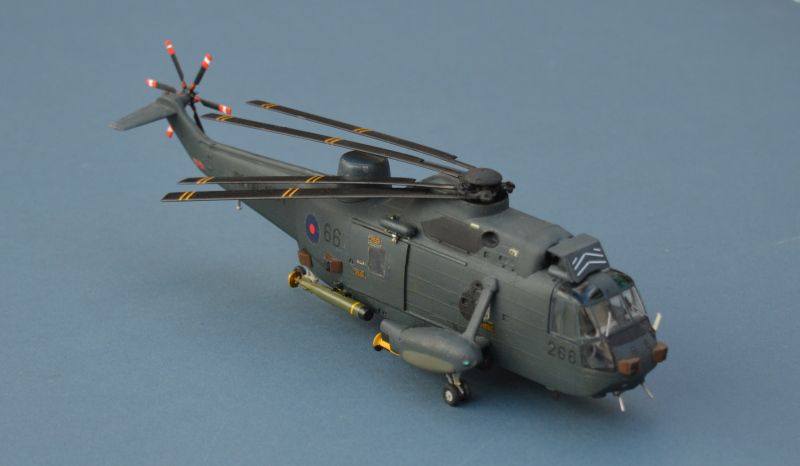
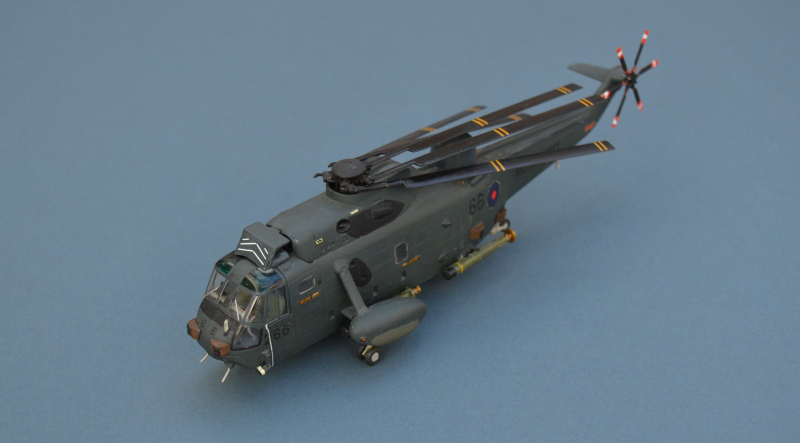
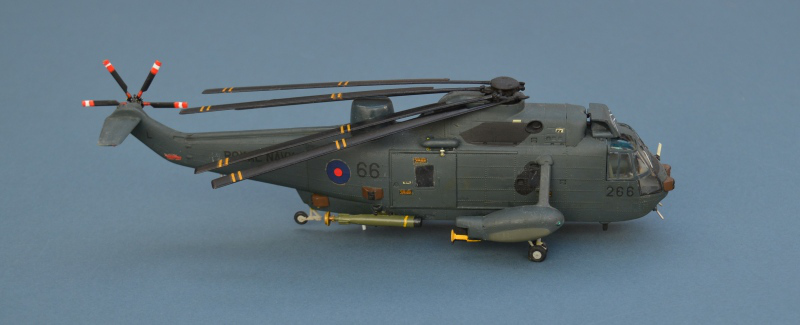
Westland Sea King ASaCS Mk7, 849 Sqn Fleet Air Arm,
HMS ARK ROYAL, Al Faw, Iraq 2003
This is the Revell 1/72 kit from the early 2000s, with minimal changes to change
it from an AEW.3 to an ASaCS.7. The kit provides markings for airframe XV650, which
was the first AEW Sea King conversion. Tragically, this and the second conversion,
airframe XV704, were involved in a mid-
During the Falklands War of 1982, it became painfully clear that the lack of organic RN Air Early Warning assets had placed the Fleet at considerable risk from air attack.
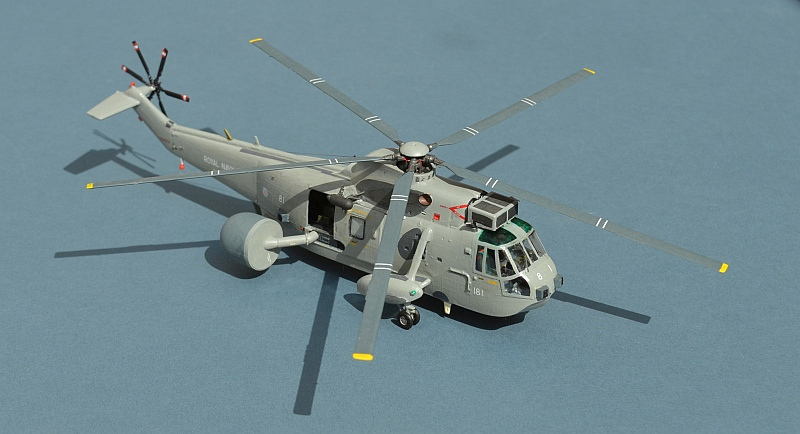
UK Industry responded to the Navy's urgent requirement with astonishing and commendable speed, by converting Westland Sea King HAS.2 airframes to carry a derivative of the Plessey/Thales Searchwater radar carried by the RAF's Nimrod aircraft. Less than 2 months after the project was initiated, Sea King AEW.3s deployed to the war zone with HMS ILLUSTRIOUS, as relief for the INVINCIBLE and HERMES air groups.
The AEW Sea King was a huge success, with far fewer limitations than its "lash-
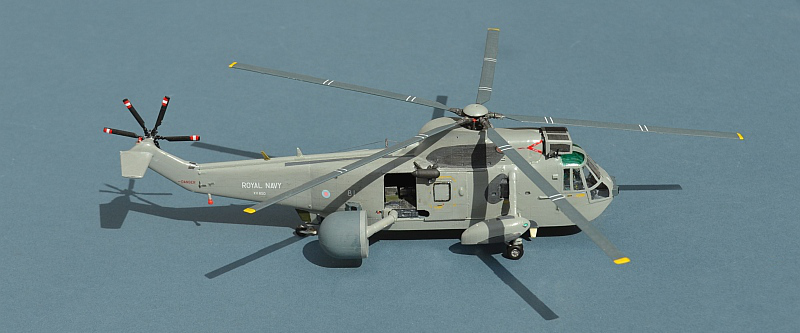
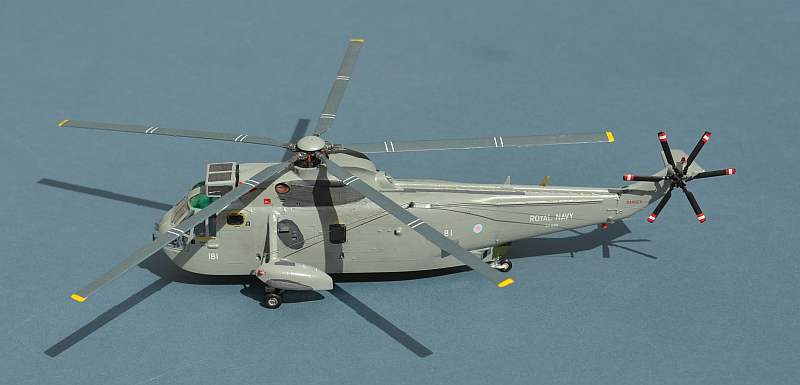
The ASaC.7 saw its first operational deployment in anger to the Gulf in 2003, where 849 Sqn's A Flight, based in HMS ARK ROYAL, provided vital radar coverage for the seaborne invasion of the Al Faw peninsula by the Royal Marines and US Marine Corps. The system proved far more capable than expected; as well as tracking, controlling and directing the air effort, it was also able to detect the movement of ground forces in much the same way as the USAF's Joint STARS system. As such it was in great demand, with 849's crews flying non stop operations in support of the ground offensive.
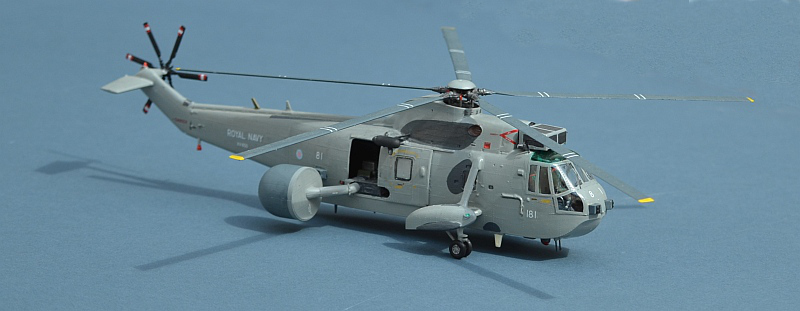
On 22 Mar 03, tragedy struck. Two ASaCS Sea Kings collided as they were handing over
duties in the Northern Gulf, with the loss of six RN Crew and one US serviceman.
The subsequent Board of Enquiry concluded that the 2 aircraft had collided head on,
partly due to the acknowledged difficulty of spotting an ASaC aircraft from ahead;
ironically in the hostile operational environment of the Northern Gulf, forward anti-
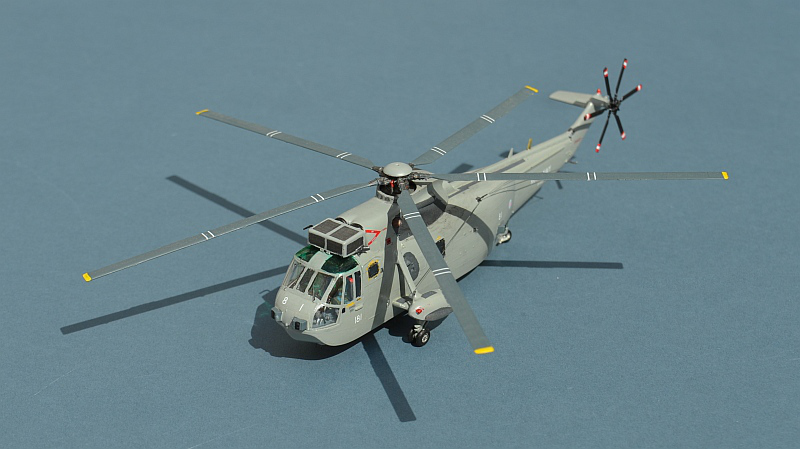
Link to report of Official Board Of Enquiry -
Royal Navy Aircrew lost in the accident:
Lt Philip Green, 30, from Caythorpe, Lincolnshire;
Lt King, 35, from Helston, Cornwall;
Lt Marc Lawrence, 26, from Westgate-
Lt Philip West, 32, from Budock Water, Cornwall;
Lt James Williams, 28, from Falmouth, Cornwall;
Lt Andrew Wilson, 36, from Exeter, Devon.
Westland Sea King HC.4, 846 Sqn Fleet Air Arm,
The Fujimi kit once again, with another excellent C-
Starting in 1980, 846 Sqn was the first part of the Royal Navy Commando Helicopter Force to swap its "Junglie" Wessex Vs for the Sea King HC.4. Based on the Westland Commando export variant developed for Egypt, the HC.4 features fixed undercarriage and a heavy lifting bracket that could carry a load nearly 3 times that of the Wessex, or up to 27 fully equipped Royal Marines. The Royal Navy's three HC.4 squadrons have since played a key role in every major conflict involving the UK since they entered service. They are currently attached to the UK's Joint Helicopter Command, with 2 squadrons deployed to Afghanistan.
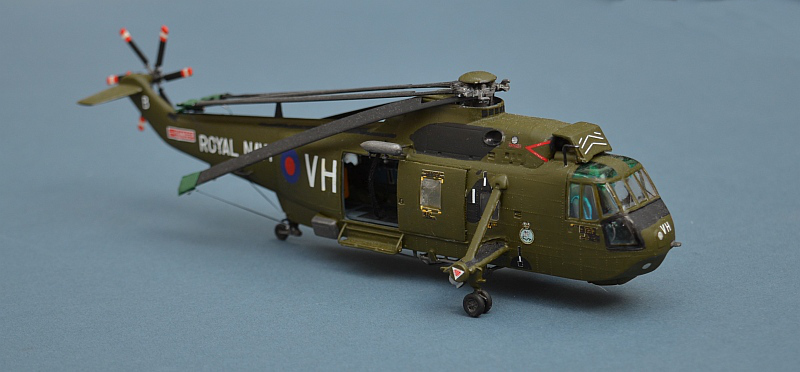
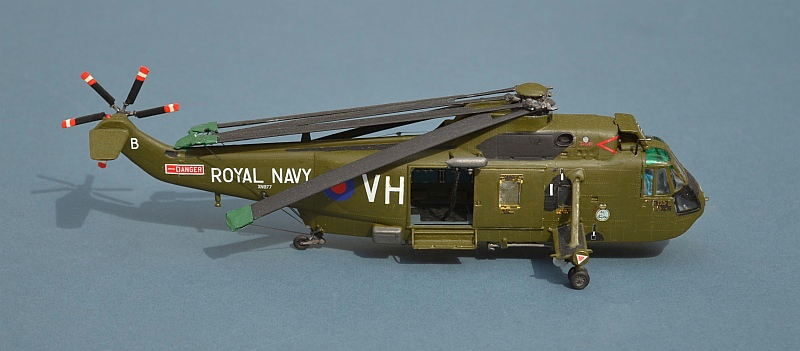
The high visibility markings and Squadron badges of the HC.4 delivery colour scheme did not last long; within a year aircraft markings had been dulled down for service in the Falklands conflict.
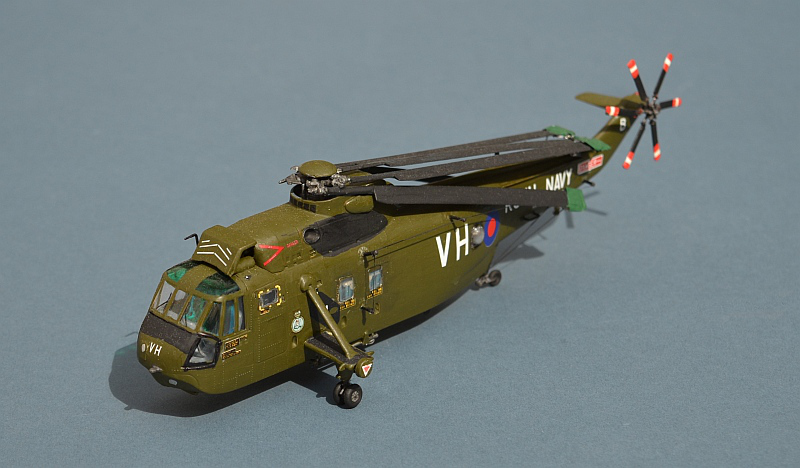
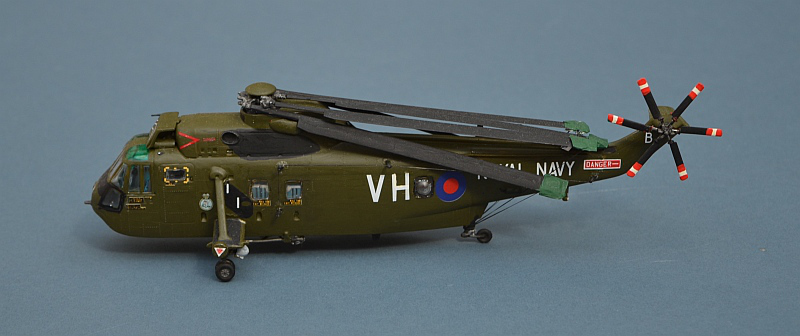
Westland Sea King HAR.3, D Flight, 202 Sqn, Royal Air Force
RAF Lossiemouth, 1981.
The Fujimi kit with a few scratch elements to replace missing parts. Link to Build Page
Nine years after entering RN service, the RAF also adopted the Sea King as a replacement for its Search and Rescue Wessex and Whirlwind aircraft. Based in small flights at RAF stations around the UK and in the Falklands, SAR Sea Kings remained in RAF service until 2016, when the entire RN and RAF SAR force was outsourced to civilian providers.
The SAR version was stripped down, without sonar but retaining the surface search
radar and with an extended cabin interior and extra observation windows in the aft
fuselage. The RN also used Sea Kings in the SAR role, but based on ex-
Despite its operational success, the Sea KIng was not initially a popular choice for the SAR role. Much heavier than the Wessex, but with a similar rotor disc size, it produced much more downdraft, making safe recovery of persons from small boats a tricky operation. Nevertheless, RN & RAF SAR pilots quickly derived ways around this, sometimes using the downdraft as a benefit, as dramatically shown when RN Sea Kings used their rotor wash to push lifeboats away from the burning RFAs, Sir Tristram & Sir Galahad, during the Falklands war.
